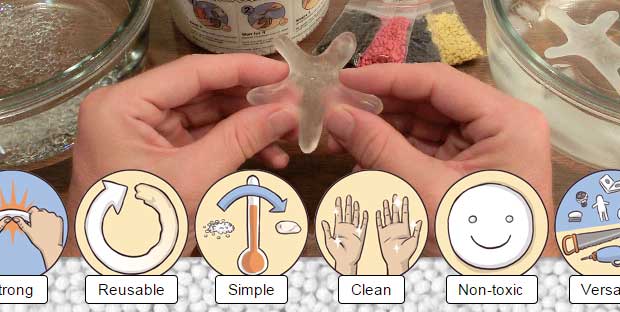While browsing my Facebook feed I stumbled upon Plastimake. Originating from Australia, Plastimake is essentially a commercial moldable plastic that softens in hot water and hardens in cold water.
The website features hundreds of sculptures and projects made from these small plastic pellets, but what caught my attention about this product in particular was its implications on sustainability. As seen in the introductory Youtube video, many people have started fixing certain broken household objects with this product rather than throwing them away. This loosely links back to our conversation in class about reusing and making the most of product on hand rather than buying our way to sustainability through eco-friendly products.
Plastimake is essentially a cradle to cradle product, boasting unlimited usage as all consumers need to do when they want to change the product is to heat it up and mould it again. But in the event that consumer do choose to throw it away, it biodegrades into water and carbon dioxide.
Although the facts remain questionable as the website relays very limited information, this still seems like an interesting step towards sustainability.



